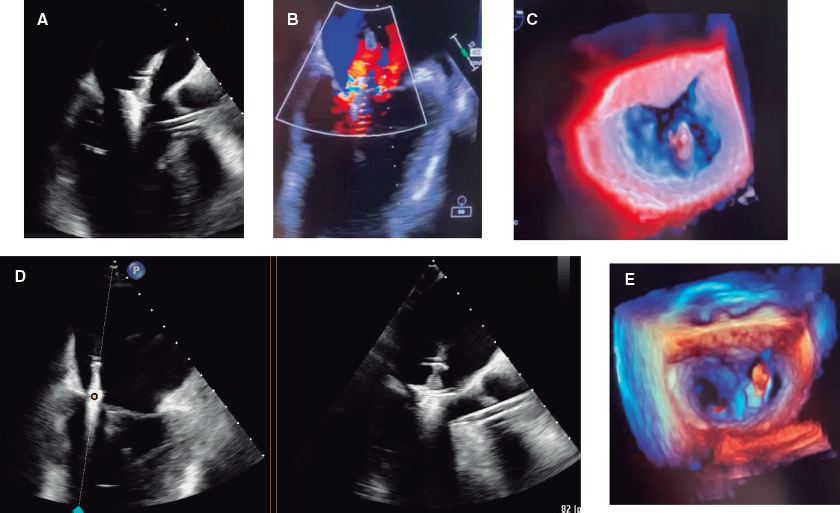QUESTION: What is your opinion of the REVIVED BCIS2 trial? Which, would you say, are its most positive and most debatable features?
ANSWER: The REVIVED BCIS21 is a prospective, multicenter, randomized, open-label trial of stable patients with severe left ventricular dysfunction (left ventricular ejection fraction [LVEF] ≤ 35%), extensive coronary artery disease with a British Cardiovascular Intervention Society (BCIS) risk score ≥ 6, and evidence of viability in at least 4 dysfunctional segments amenable to percutaneous coronary intervention (PCI). Patients were randomized in a 1:1 ratio to receive PCI along with optimal medical therapy (OMT), or OMT alone. The OMT included pharmacological therapy and implantable devices for the management of heart failure.
The primary endpoint was a composite of all-cause mortality or hospitalization over a minimum follow-up of 24 months. Secondary endpoints included 6- and 12-month echocardiographic measurements of LVEF (core lab), quality of life measurement through questionnaires such as the Kansas City Cardiomyopathy Questionnaire, the EuroQol Group 5-Dimensions 5-Level Questionnaire, and New York Heart Association Functional Class, cardiovascular death, acute myocardial infarction (AMI), appropriate defibrillator therapy (antitachycardia pacing or shock), unplanned revascularization, brain natriuretic peptide values, functional class, and major bleeding.
A total of 700 patients were included, of which 347 were randomized to PCI and 353 to OMT. The participants’ mean age was 69 years, and 12% were women. The median follow-up was 41 months (importantly, randomization began back in 2013 and the study was published in 2022), and 40 hospitals in the United Kingdom participated in the trial. The participants received guideline-directed pharmacological therapy (93% received beta-blockers; 66% angiotensin-converting-enzyme inhibitors or angiotensin II receptor blockers, and 56% aldosterone antagonists). More than 30% of the participants in the 2 groups received a defibrillator or resynchronization device before or during the study period.
The primary endpoint was observed in 37.2% of the PCI group and 38% of those in the OMT group. LVEF was similar in the 2 groups both at 6 and 12 months. Although quality of life questionnaires favored PCI at 6 and 12 months, this improvement was attenuated at 24 months.
I believe the main strength of the study is that it is the first to compare this revascularization mode (PCI) with OMT in ischemic patients with LVEF ≤ 35%. Previously, we only had the STITCH2 trial for this patient subgroup, which compared coronary revascularization surgery with OMT in a population of younger patients with less extensive coronary artery disease. This trial did not show any benefits associated with surgery in terms of overall 5-year mortality but did show benefits at the extended 10-year follow-up. Another important point is the efficacy of OMT in these patients today; in fact, the number of events was even lower than initially anticipated by the investigators.
Regarding debatable aspects, I’d say that, although the patients were selected on the basis of myocardial viability; until now viability testing has never been used to predict the effectiveness of revascularization.2,3 And to be honest, it may not be the most suitable way to identify patients who will benefit from PCI in this population.4 Additionally, most patients were asymptomatic (66%) or showed mild angina symptoms, which could undoubtedly have impacted the results.
Q.: What was the patients’ coronary artery disease profile? What do think of the use of an angiographic risk index like the BCIS in this trial compared with alternatives like the SYNTAX score, and especially functional assessment using pressure guidewires? How far do you think the causal relationship between coronary artery disease and dilated cardiomyopathy was clear?
A.: Compared with the STITCH2 trial, the REVIVED BCIS21 trial included older patients with more extensive coronary artery disease and more contemporary medical treatment. However, the assessment of disease extent and the significance of coronary involvement according to the BCIS5 score raises some questions. In fact, it’s surprising that despite having mean scores of 10, almost half of the participants had 2-vessel disease, and the median number of vessels and lesions treated was 2,6 which raises concerns about how many lesions were not revascularized. Also, it is unclear whether there could have been some selection bias, because some participants with more extensive coronary artery disease amenable to surgery might have been referred directly and not included in the study.
On the other hand, it seems obvious that lesion assessment with pressure guidewires would have provided the study with significant reliability. If we look at the BCIS score, lesions are defined as severe when stenosis is > 70%. Especially in a population of mostly asymptomatic patients or those with mild angina symptoms and multivessel disease, it seems more than reasonable to select target lesions and vessels based on coronary physiology assessment.
Q.: What can you tell us about revascularization? Could the degree of complete revascularization or crossing over from OMT to PCI have impacted the results?
A.: As I mentioned, despite having extensive coronary artery disease according to the angiographic scale used, almost half of the participants had 2-vessel disease, and the median number of treated lesions was 2. Additionally, the authors mention that they have not yet analyzed whether the target vessels coincided with segments of affected viability, complicating interpretation of the results even more. Undoubtedly, if some lesions were left untreated while others without indications were indeed treated, the impact on the results is obvious. Also, as you mentioned in your question, unplanned revascularization was more frequent in the OMT group (10.5%) than in the PCI group (2.9%), which could explain why the PCI group showed better quality of life scores at 6 and 12 months, but not at 24 months when the impact of the higher rate of unplanned revascularizations in the OMT group may have been a factor.
Q.: Were there any benefits seen in any type of clinical event in the PCI group?
A.: Yes. The PCI group experienced fewer episodes of ventricular tachycardia or fibrillation than the OMT group, suggesting a lower ischemic burden and arrhythmic risk in the OMT group. Additionally, the number of defibrillators implanted after randomization was lower in the PCI group.
On the other hand, although the incidence of AMI was similar in the 2 groups (around 10%), almost half were perioperative in the PCI group, whereas none were perioperative in the OMT group, resulting in more spontaneous AMIs in the OMT group (9% vs 5%). This datum might be clinically relevant because the ISCHEMIA trial7 revealed that spontaneous AMIs have a worse prognosis than perioperative AMIs.
As I mentioned previously, the PCI group also benefitted in terms of quality of life at 6 and 12 months, but not at 24 months.
Q.: Bearing in mind that coronary artery disease may have a causal relationship with cardiomyopathy, do you think there is a particular patient profile that could benefit from PCI or, at the least, merit further investigation of this link?
A.: Based on the REVIVED trial results, it’s obvious that percutaneous revascularization in stable patients with severe LVEF depression, multivessel disease, and few or no angina symptoms provides little benefit. If we remember that lesion selection was purely angiographic (lesions with stenosis ≥ 70%), and that we just don’t know if the treated lesions coincided with segments of abnormal viability, patients with severe left ventricular dysfunction, angina symptoms, angiographically significant lesions, and abnormal coronary physiology assessments (or left main coronary artery intravascular ultrasound assessments)8 may constitute a group that could benefit from coronary angioplasty in terms of survival and quality of life.
FUNDING
None reported.
CONFLICTS OF INTEREST
None.
REFERENCES
1. Perera D, Clayton T, O'Kane PD, et al. Percutaneous revascularization for ischemic left ventricular dysfunction. N Engl J Med.2022;387:1351-1360.
2. Velazquez EJ, Lee KL, Jones RH, et al. Coronary-artery bypass surgery in patients with ischemic cardiomyopathy. N Engl J Med.2016;374:1511-1520.
3. Cleland JG, Calvert M, Freemantle N, et al. The heart failure revascularisation trial (HEART). Eur J Heart Fail. 2011;13:227-233.
4. Ryan M, Morgan H, Chiribiri A, Nagel E, Cleland J, Perera D. Myocardial viability testing:all STICHed up, or about to be REVIVED?Eur Heart J. 2022;43:118-126.
5. Perera MA, Stables R, Booth J, et al. The Balloon pump-assisted Coronary Intervention Study (BCIS-1):Rationale and design. Am Heart J. 2009;158:910-916.
6. Vergallo R, Liuzzo G. The REVIVED-BCIS2 trial:percutaneous coronary intervention vs. optimal medical therapy for stable patients with severe ischaemic cardiomyopathy. Eur Heart J. 2022;43:4775-4776.
7. Maron DJ, Hochman JS, Reynolds HR, et al. Initial invasive or conservative strategy for stable coronary disease. N Engl J Med. 2020;382:1395-1407.
8. De Maria GL, Testa L, de la Torre Hernandez JM, et al. A multi-center, international, randomized, 2-year, parallel-group study to assess the superiority of IVUS-guided PCI versus qualitative angio-guided PCI in unprotected left main coronary artery (ULMCA) disease:Study protocol for OPTIMAL trial. PLoS One. 2022;17:e0260770.
* Corresponding author.
E-mail address: jfdiazf@yahoo.es (J. F. Díaz Fernández).













